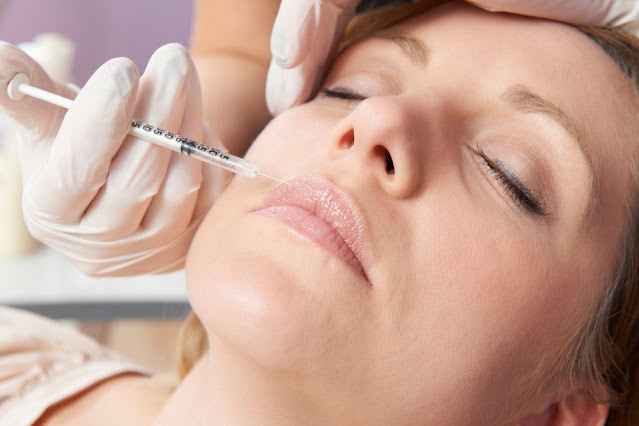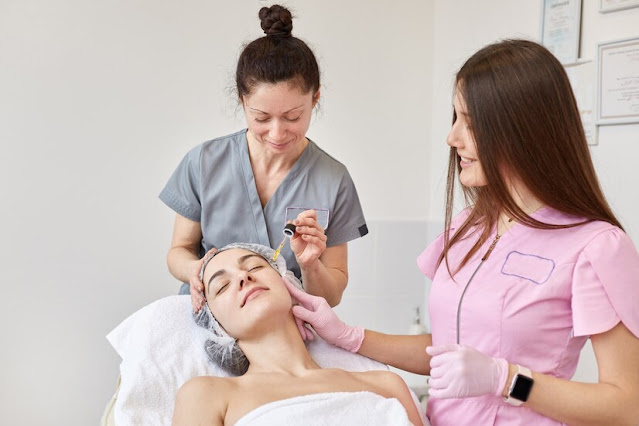Understanding and Treating Dynamic vs. Static Lines
As we age, the lines on our faces often become more pronounced, revealing the passage of time and our unique expressions. Among these lines, there are two primary types: dynamic and static. These lines differ not only in their appearance but also in their causes and treatments. Understanding these distinctions can be pivotal in choosing the right approach for maintaining youthful skin.
Dynamic Lines
Dynamic lines are facial wrinkles that emerge from repeated muscle movements and expressions. These lines are often called "expression lines" or "motion wrinkles" because they appear when specific facial muscles contract during various animated expressions like smiling, frowning, raising eyebrows, or squinting.
Causes of Dynamic Lines
Facial Muscle Contractions: Repeated facial muscle movements cause lines and wrinkles to form over time. For example, crow's feet around the eyes develop due to smiling or squinting, while frown lines or glabellar lines between the eyebrows form from frowning or concentrating.
Repetitive Movements Over Time: Facial expressions cause lines to become more noticeable due to weakened skin elasticity and muscle contractions.
Loss of Skin Elasticity: As we age, our skin produces less collagen and elastin, essential for maintaining firmness and elasticity, making the skin prone to developing permanent creases when facial muscles contract.
Genetic Predisposition: Genetics can influence the early development of dynamic lines through inherited facial expressions.
Environmental Factors: External factors such as sun, pollution, smoking, and stress can accelerate dynamic lines. UV radiation from the sun breaks down collagen and elastin, causing wrinkles.
Treating Dynamic Lines
Botulinum Toxin Injections (Botox)
How it works: Botox is a neurotoxin that temporarily relaxes specific facial muscles responsible for causing dynamic lines. By inhibiting muscle contractions, it minimizes the appearance of wrinkles.
Procedure: A healthcare professional administers Botox via injections into targeted muscles. The procedure is relatively quick, often taking around 10-15 minutes.
Effectiveness: Results typically appear within a few days to a week, and the effects last for several months (usually 3-6 months) before gradually wearing off.
Potential Side Effects: Mild bruising, temporary drooping of nearby muscles, headache, or allergic reactions in rare cases. It's essential to seek treatment from a qualified professional to minimize risks.
Dermal Fillers
Types of fillers: Hyaluronic acid-based fillers like Juvederm or Restylane are commonly used to address dynamic lines.
Function: Dermal fillers add volume and plump up the skin, reducing the appearance of wrinkles caused by facial movements.
Procedure: Administered through injections, the treatment can be performed in a clinic setting and usually takes 15-30 minutes.
Results: Immediate results are visible, with improvements lasting anywhere from six months to a year, depending on the type of filler used and individual factors.
Risks and Benefits: Potential side effects include redness, swelling, bruising, or allergic reactions. However, when performed by a skilled practitioner, the risks are minimized, and the benefits often outweigh them.
Combination Treatments: Sometimes, a combination of Botox and dermal fillers targets different types of wrinkles. Botox addresses dynamic lines by relaxing muscles, while fillers add volume to smoothen deeper wrinkles.
Static Lines
Static lines, also known as "resting wrinkles," are visible creases and folds on the skin that persist even when the face is at rest. Unlike dynamic lines, which form due to facial muscle movements, static lines develop gradually over time due to multiple factors primarily associated with aging and skin changes.
Causes of Static Lines
Reduced Collagen and Elastin Levels: Aging reduces collagen and elastin production, maintaining skin structure and elasticity and forming static lines.
UV Exposure: UV radiation from the sun can lead to premature skin aging by damaging collagen and elastin fibers, causing the early appearance of static lines, particularly in areas exposed to sunlight.
Smoking and Poor Lifestyle Choices: Smoking speeds up skin aging by reducing blood flow, which deprives the skin of nutrients and oxygen - leading to collagen and elastin breakdown and static line development.
Natural Aging Process: Aging causes static lines due to loss of skin elasticity and reduced natural repair mechanisms, resulting from the skin's decreased ability to retain moisture.
Genetic Factors: Genetics may predispose specific individuals to premature skin aging, such as developing static lines.
Treating Static Lines
Laser Treatments
Fractional Laser Therapy: This treatment stimulates collagen production and remodels the skin using targeted laser energy to address static lines and improve skin texture.
Procedure: A dermatologist or skincare professional administers the laser, which breaks down damaged skin cells and encourages the growth of new, healthier skin.
Results: Gradual improvement over several months as new collagen forms, leading to smoother skin texture and reduced appearance of lines.
Benefits and Risks: Mild redness or swelling might occur temporarily, but these typically subside within a few days. Sun protection post-treatment is crucial to prevent complications.
Chemical Peels and Microneedling
Chemical Peels: A chemical solution is applied to the skin, causing it to exfoliate and eventually peel off. This process stimulates collagen production and improves skin texture.
Microneedling: Microneedling involves using fine needles to create controlled micro-injuries, prompting the skin to produce collagen and elastin, thereby reducing static lines.
Procedure and Results: Both treatments encourage skin renewal, leading to smoother and more youthful skin.
Benefits and Risks: Possible redness, irritation, or mild discomfort post-procedure, which typically resolves within a few days. Sun protection and proper aftercare are essential.
Combination Approaches: Often, treatments such as fillers and laser therapy may be recommended to target various aspects of static lines and achieve optimal results.
Conclusion
Understanding the differences between dynamic and static lines is crucial for selecting the most suitable treatment approach. While dynamic lines often benefit from muscle-relaxing treatments like Botox, static lines may require different interventions such as dermal fillers, laser therapies, or chemical peels. Book an appointment at M Health and Beauty for excellent treatments that will leave your skin looking wrinkle-free.




Comments
Post a Comment